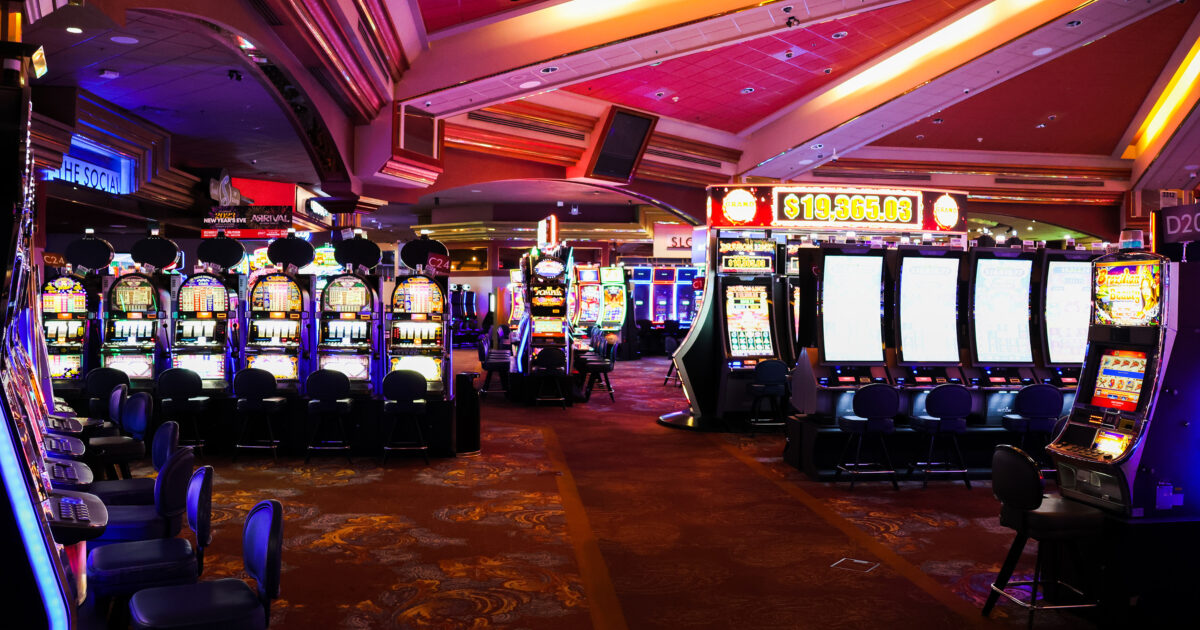Comprehending RTP for Slot Machines
Regarding casino slots games, players frequently get captivated by the flashing lights, exciting themes, and the adrenaline of turning the reels. But beyond the sparkle and excitement lies an essential concept that every player should understand: Return to Player, or RTP. This crucial metric plays a significant role in determining the amount of money you can expect to receive back over time, influencing your gaming experience and strategy as you play.
RTP is usually expressed in percentage terms and represents the typical sum of money returned to players compared to the total amount wagered. For instance, if a slot game has an RTP of 95 percent, it means that, on the average, players get back ninety-five dollars for every $100 they stake. Understanding this concept can help players make informed decisions when choosing which slots to play, ultimately improving their overall casino experience.
What is is RTP?
The Return to Player concept, often called RTP, refers to a crucial element in the realm of slot machine games. It indicates the percentage of total bets which a specific slot is designed to refund to players through its operation. For example, if a specific slot has an RTP of 95, this means that, hypothetically, players should anticipate to get back ninety-five dollars for each $100 bet during extended play. Understanding RTP assists players analyze the potential returns of various slot games.
RTP isn’t a surety of individual wins but instead a average determined over many spins. Players’ experience might be different significantly because of the chance intrinsic in the games. A greater RTP suggests better odds for the player, thus making it an essential factor to consider while picking the slots to play. Nonetheless, even with high RTP, there can be stretches where players experience losses, since randomness plays a significant role.
It is also worth noting that the slots available have varying RTP percentages. Some games could display a lower RTP due to a high level of fun or distinct elements, while others maintain a elevated percentage to draw in more cautious players. Comprehending RTP allows players to make wise choices about their gaming strategies and manage their bankrolls effectively while experiencing the excitement of slot machines.
The Way Return to Player is Determined
The RTP, or Return to Player, represents a critical indicator in the realm pertaining to gambling slot machine games. It represents the percentage from total wagered money that a gaming device can be expected to return to gamblers in the long run. Comprehending how this measurement can be derived demands insight into both the game’s design as well as its payout system. The return value is calculated via intricate calculations and statistical analyses performed during the slot machine development process. Slot creators take into account various factors, including the likelihood of winning outcomes and the magnitude for payouts for each combination.

In order to calculate this metric, developers model a vast number of spins on the slot machine. Such simulations aid determine the average amount that on average, a gambler can expect to win according to their wagers. For instance, if a slot game has an average return of 95%, this means that, in theory, for every $100 bet, players should anticipate receive ninety-five dollars back over time. This figure does not indicate how much a player will win in a single play or over a few plays; instead, it reflects overall payout expectations.
RTP values are usually disclosed from the casino or game creator. Players must always seek out this information when choosing a slot game, as it has the potential to influence their overall enjoyment. A higher RTP usually means a higher probability to recoup a segment of bets, although individual sessions may differ greatly. GA179 Grasping this concept enables gamblers make informed decisions while improve their overall enjoyment within the world of casino slots.
Importance of Return to Player in Gaming
Understanding the Return to Player or RTP is essential for any player involved in gambling on slots. Return to Player refers to the proportion of wagered money that a slot machine is engineered to return to players over the long run. A greater RTP shows that players can anticipate receiving a bigger share of their wagers back, making it an important factor for those looking to maximize their play experience. Knowing this figure aids gamers make smart choices about which slots to play, as it can significantly influence their potential winnings.
Moreover, RTP plays a central role in the overall fairness and transparency of slot games. Gamers are often drawn to slots with greater return rates because they provide a superior chance of winning over the long term. Casinos and game developers use RTP as a marketing tool to lure players, guaranteeing they maintain a lead in the booming gaming industry. By understanding of Return to Player, gamers can select slots that match with their comfort level and gaming goals.
In conclusion, the concept of Return to Player encourages safe gaming practices. By understanding that not all games will provide short-term winnings and that RTP is determined by long-term play, gamers can regulate their expectations and playing habits effectively. This knowledge enhances the enjoyment of slot games while promoting a more balanced gambling landscape. Gamers who comprehend the significance of Return to Player are likely to have a better experience and lessen the risks of problematic gambling behavior.